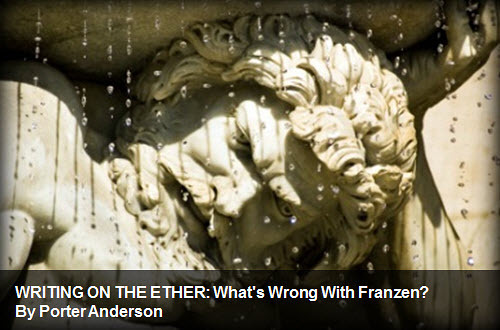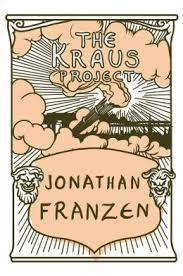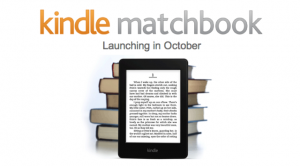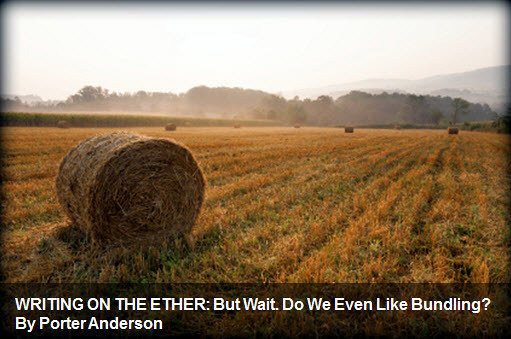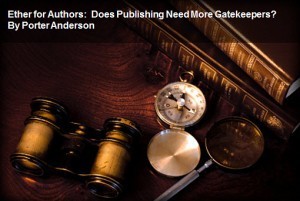Jane Friedman's Blog: Jane Friedman, page 171
September 19, 2013
WRITING ON THE ETHER: What’s Wrong With Franzen?
Table of Contents
Fish in a Barrel
Firing the Retro-Rockets
“Buy My Book!”
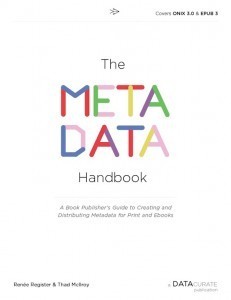 The Metadata Handbook
The Metadata HandbookA Book Publisher’s Guide to Creating and Distributing Metadata for Print and Ebooks, by Renée Register and Thad McIlroy
This is a one-stop guide for publishers—large, small, and independent. An essential resource for 21st century publishing, The Metadata Handbook covers:
How metadata for books operates in the real world
Metadata fundamentals and the history of metadata for books
Metadata standards and best practices
Essential metadata elements for print and ebooks
The basics of ONIX for Books, including ONIX 3.0
The basics of EPUB 3 metadata options
Available in paperback, PDF, EPUB, and Kindle formats at www.themetadatahandbook.com
Fish in a Barrel

Jonathan Franzen
Jonathan Franzen “warns ebooks are corroding values” (The Guardian, Alison Flood) and says “ebooks are damaging society” (The Telegraph, Anita Singh).
And now you can follow this link to pre-order his new October 1 release, The Kraus Project: Essays by Karl Kraus—as an ebook.
The author somehow is able find it in his heart to accept your money for that oh-so-impermanent format he has criticized so profusely in the past, the ebook.
And that ebook is purveyed to us from the very mountaintop of the “contemporary technoconsumerism” he newly decries: Amazon.
Let this be a lesson to us all. Even after achieving highest literary honors, you can still lose it when it’s time to say…”buy my book!”
Franzen’s latest in a long line of tirades against all things “modern” is headlined Jonathan Franzen: What’s Wrong With the Modern World.
Did you ask Franzen to tell us what’s wrong the the modern world?
I didn’t, either.
No, the chutzpah native to the creature, it seems, is such that he finds it necessary from time to time to deliver himself of a few incendiary comments about how we’re all going to hell in a Hustle bag.
This time, in his essay at The Guardian, he wants to tell us that Viennese fin-de-siècle essayist Karl Kraus has “a lot to say to us in our own media-saturated, technology-crazed, apocalypse-haunted historical moment.”
“Technology-crazed.” Crazed. Did I mention melodrama?
Jonathan Franzen on the evils of the internet and the deep humanity of John Hodgman as "a PC" http://t.co/indRfh7zKA
— Jay Kreps (@jaykreps) September 19, 2013
I’ll just offer you a few quick excerpts here, leaving you to decide whether to subject yourself to the full and fulsome experience of a complete read.
Having critiqued the inherent mistakes of the old Mac-vs.-PC commercials in terms of how “characters in novels need to have actual desires,” Franzen then arrives at this:
One of the worst things about the Internet is that it tempts everyone to be a sophisticate – to take positions on what is hip and to consider, under pain of being considered unhip, the positions that everyone else is taking.
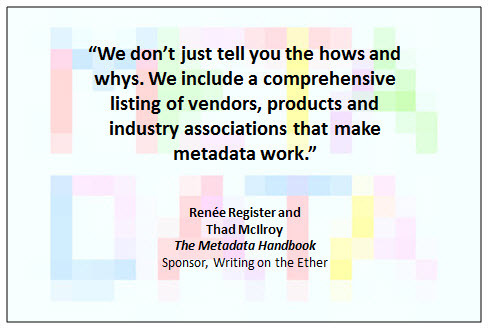 Funny, I find the Net to be crawling with something other than sophisticates. I must be hanging with the wrong crowd-sorcerers.
Funny, I find the Net to be crawling with something other than sophisticates. I must be hanging with the wrong crowd-sorcerers.
Having told us that Kraus “could sound like an elitist, [but] he wasn’t in the business of denigrating the masses or lowbrow culture,” Franzen then writes:
It’s not clear that Kraus’s shrill, ex cathedra denunciations were the most effective way to change hearts and minds. But I confess to feeling some version of his disappointment when a novelist who I believe ought to have known better, Salman Rushdie, succumbs to Twitter. Or when a politically committed print magazine that I respect, N+1, denigrates print magazines as terminally “male,” celebrates the internet as “female,” and somehow neglects to consider the internet’s accelerating pauperisation of freelance writers.
Those were Kraus’ “shrill, ex cathedra denunciations,” right?
Before Rushdie “succumbed” to Twitter, right? Succumbed.
Dear #Franzen: @MargaretAtwood @JoyceCarolOates @nycnovel @NathanEnglander @Shteyngart and I are fine with Twitter. Enjoy your ivory tower.
— Salman Rushdie (@SalmanRushdie) September 16, 2013
So Franzen is ready to take on the Krausian burden. Stand by for more shrill, ex cathedra denunciations. Here’s one, or three, or fifteen:
In my own little corner of the world, which is to say American fiction, Jeff Bezos of Amazon may not be the antichrist, but he surely looks like one of the four horsemen. Amazon wants a world in which books are either self-published or published by Amazon itself, with readers dependent on Amazon reviews in choosing books, and with authors responsible for their own promotion. The work of yakkers and tweeters and braggers, and of people with the money to pay somebody to churn out hundreds of five-star reviews for them, will flourish in that world. But what happens to the people who became writers because yakking and tweeting and bragging felt to them like intolerably shallow forms of social engagement? What happens to the people who want to communicate in depth, individual to individual, in the quiet and permanence of the printed word, and who were shaped by their love of writers who wrote when publication still assured some kind of quality control and literary reputations were more than a matter of self-promotional decibel levels?
Consider that “what Amazon wants” business. Franzen now knows what Amazon “wants?” He’s what, in the boardroom? In Bezos’ office closet?
@MaraWritesStuff his prose is outstanding but his views are idiotic. Imagine the best written chain emails ever.
— Handsome B Wonderful (@brian_carle) September 19, 2013
He’s not only biting the hand that feeds him (and many more authors and their readers) but he’s also chewing the legs off the market that supports him. He sells his books on this Amazon-of-the-Apocalypse, the corporate desires of which he claims to know. And he sells them as ebooks, not just holy print.
Speaking of which, he writes:
So the physical book goes on the endangered-species list, so responsible book reviewers go extinct, so independent bookstores disappear, so literary novelists are conscripted into Jennifer-Weinerish self-promotion, so the Big Six publishers get killed and devoured by Amazon: this looks like an apocalypse only if most of your friends are writers, editors or booksellers.
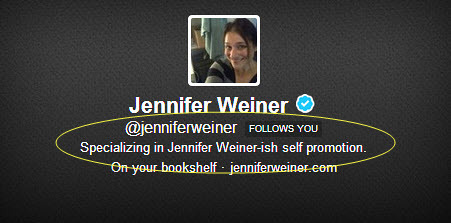 For the record, the above-mentioned Jennifer Weinerish One goes right for it in What Jonathan Franzen Misunderstands About Me at The New Republic:
For the record, the above-mentioned Jennifer Weinerish One goes right for it in What Jonathan Franzen Misunderstands About Me at The New Republic:
I’m not entirely clear on what Weiner-ish self-promotion includes, or how it might be different than what other writers are doing—which is weird because, as its foremost practitioner, I should know…In 2010, I coined the hashtag Franzenfreude. It was very bad German for a very real problem: When Franzen’s most recent novel, Freedom, was published, newspapers and magazines devoted thousands of words to the book and its author, while giving other literary books far less attention, and, in some cases, ignoring commercial works completely. Perhaps Franzen’s recent name-check was payback for when I implied that he was the face of white male literary privilege, or for pointing out that he’s the kind of writer who goes on Facebook only to announce that he won’t be doing Facebook, with the implication that he doesn’t have to do Facebook, because the media does his status updates for him.
And “shrill, ex cathedra denunciations,” did Franzen say?
While torching for print, he’s burning up a lot of people’s patience, and with a tone that gets awfully close to “poor me”:
Maybe nobody will care about printed books 50 years from now, but I do. When I read a book, I’m handling a specific object in a specific time and place. The fact that when I take the book off the shelf it still says the same thing — that’s reassuring.
Truly, it is the end of civilisation: who knew? @ManBookerPrize
http://t.co/InFfhjPgj0
— Philip Jones (@philipdsjones) September 18, 2013
Firing the Retro-Rockets
Franzen boomerangs back to us right at the end of this diatribe, but not before getting to thermonuclear warheads. He calls the Nook “a superior e-reader” and mentions “Chinese-made ultra-low-cost porch furniture at Home Depot.” As I said, it’s a long piece.
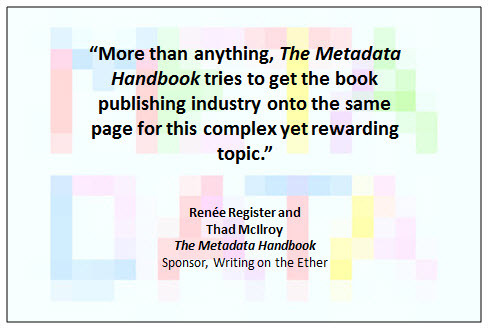 And in a sudden realization, perhaps, that the ground is coming up awfully fast below him, Franzen writes:
And in a sudden realization, perhaps, that the ground is coming up awfully fast below him, Franzen writes:
Whether I like it or not, the world being created by the infernal machine of technoconsumerism is still a world made by human beings.
Ah. And? And now we read what I suppose I’d like to have seen him lead with. Ahead of the shrill, ex-cathedra denunciations, not after:
Maybe apocalypse is, paradoxically, always individual, always personal. I have a brief tenure on Earth, bracketed by infinities of nothingness, and during the first part of this tenure I form[ed] an attachment to a particular set of human values that are shaped inevitably by my social circumstances. If I’d been born in 1159, when the world was steadier, I might well have felt, at 53, that the next generation would share my values and appreciate the same things I appreciated; no apocalypse pending. But I was born in 1959, when TV was something you watched only during prime time, and people wrote letters and put them in the mail, and every magazine and newspaper had a robust books section, and venerable publishers made long-term investments in young writers, and New Criticism reigned in English departments, and the Amazon basin was intact, and antibiotics were used only to treat serious infections, not pumped into healthy cows.
That sets up what I think is the most important couple of lines in his 5,600-word essay. Franzen is still talking about the world he was born into in 1959:
It wasn’t necessarily a better world (we had bomb shelters and segregated swimming pools), but it was the only world I knew to try to find my place in as a writer.
Jonathan Franzen Is Wrong Again: Why Twitter Is Great for Writers: http://t.co/p1MpNttQcr via @flavorwire
— Frankfurt Book Fair (@Book_Fair) September 17, 2013
Feel him coming down?
And so today, 53 years later, Kraus’s signal complaint – that the nexus of technology and media has made people relentlessly focused on the present and forgetful of the past – can’t help ringing true to me.
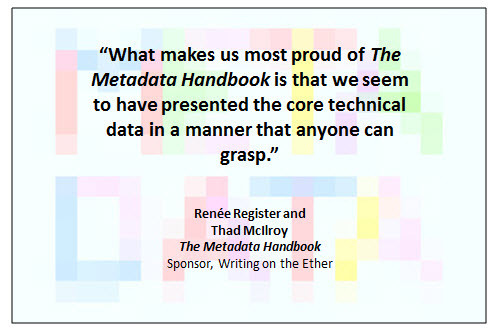 Now, at last, more feeling than fight, anxiety over accusation:
Now, at last, more feeling than fight, anxiety over accusation:
Kraus was the first great instance of a writer fully experiencing how modernity, whose essence is the accelerating rate of change, in itself creates the conditions for personal apocalypse…As long as modernity lasts, all days will feel to someone like the last days of humanity.
Okay. This we get.
SLIDESHOW: 100 Twitter Feeds by Novelists More Interesting than Jonathan Franzen.
— Rachel Fershleiser (@RachelFersh) September 19, 2013
I’m reminded of Paola Antonelli’s exhibition at MoMA, Design and the Elastic Mind—how much sheer change, she asked, can we embrace? Are our minds stretchy enough to keep accommodating what Franzen now is calling this “accelerating rate of change?”
This was also one of the key inquiries of Anne Bogart’s poignant evocation of Marshall McLuhan in The Medium. (Bogart’s A Rite with Bill T. Jones has its New York premiere, October 3-5, at BAM.)
So…what has happened here? What’s wrong with the not-at-all-modern, 54-year-old Jonathan Franzen?
@samatlounge You are the best conference flogger I know.
— Don Linn (@DonLinn) September 17, 2013
“Buy My Book!”

Dennis Abrams
The Kraus Project is essays, in the original German and in Franzen’s translations, with Franzen’s commentary in notes. As a Publishers Weekly review has it, “Several footnotes extend for pages, turning Kraus into background music for scholarly speculation and ruminations” from Franzen.
Publishing Perspectives’ Dennis Abrams has excerpted some of Franzen’s Guardian essay in Franzen Says Amazon Presages the Apocalypse.

Edward Nawotka
In a comment, Edward Nawotka, Publishing Perspectives’ editor in chief, writes:
Kraus was writing in the midst of the Austro-Hungarian empire, which looked invincible at the time, but came to a demise during his lifetime. Franzen would do well to consider this when talking about Amazon. Empires come and go, come and go — and not infrequently the ones that look unstoppable fall the fastest.

Jennifer Schuessler
Jennifer Schuessler at the New York Times, in Jonathan Franzen Assails the Internet (Again), writes:
Jonathan Franzen, the sometime critic of Oprah Winfrey, Facebook likes, non-birdwatchers and overly difficult novels, is at it again.
She rather charitably refers to Franzen’s aria as a “curtain raiser” on the new book and writes:
Mr. Franzen may despise the ephemeral social-media slipstream that conveniently blasted news of his book out into the world. But how much is timeless dead-tree literary discourse really paying attention to him or other literary novelists of his generation?
Someone needs to do something about all these BOOKS in my OFFICE good lord, people.
— Ginger Clark (@Ginger_Clark) September 18, 2013
Less kind, but maybe more fun: the HusdonHongo.com workup of a little test for you. You’re presented with a series of comments and asked to decide whether each is something said by Franzen or “randomly chosen YouTube comments condemning saggy pants.”
For example, you’re asked to choose whether Franzen or a YouTube comment about saggy pants gave us this: “(The Internet/Pants sagging) is the antithesis of the imagination. It leaves nothing to the imagination.”
That’s how crazily Franzen has nipped on over to the cliff’s edge of public opinion. Is he unaware that he’s on the verge of making himself a laughingstock on some issues with which we could use some serious help? He’s the one in need of help now.
The pile-on of criticism, by those whose pants are sagging and otherwise, is probably earned. Those shrill, ex cathedra denunciations in the essay, you know; they may not work as well today as they did for Kraus in Vienna.

Maria Bustillos
A bit of a rescue effort, and a good-hearted one at that, lies in the writings of Maria Bustillos at the New Yorker in Jonathan Franzen, Come Join Us!
She writes:
Franzen is a nostalgist, and he wants to preserve the traditional values and practices of the book world at all costs, and can therefore come off sounding pompous about “high culture.” Plus, he is, as he admits in the essay, a little off when he characterizes certain matters of contemporary coolness.
Bustillos can’t stop running into the obvious contradictions, either. She concedes, “Comparing Windows Vista to Vienna before the First World War is something of a stretch.” And: “He may be a dork, but he’s absolutely and preëminently and kind of magnificently our dork.” (To which I want to say, “Speak for your own dorks,” Maria, but I respect what she’s trying to do.)
Intelligent, dimensional piece on Franzen's righteousness, wrongness, and immutable paradoxes by @mariabustillos http://t.co/dwRDGAX3nD
— Maria Popova (@brainpicker) September 19, 2013
Somehow, she manages to say that Franzen is off-track, and that even his writings are “endearingly weird,” but that he’s “the only American novelist of my generation (that I know of) who writes with absolute clarity, conviction, and meaning about the world I live in every day.” We may not all live in quite so “endearingly weird” a world.
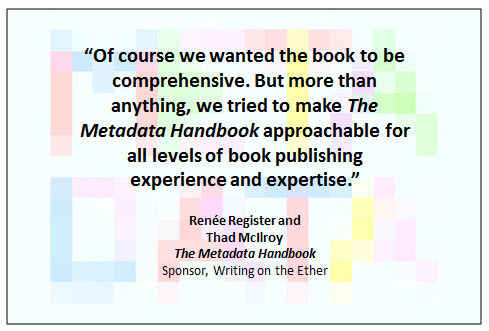 I’m still with Bustillos, however, firmly. For one thing, she makes an excellent point being joked about online by many: Franzen isn’t hearing this debate.
I’m still with Bustillos, however, firmly. For one thing, she makes an excellent point being joked about online by many: Franzen isn’t hearing this debate.
I believe that Franzen gets into these scraps because his detractors haven’t the slightest fear that he will reply. He won’t: he has no Twitter handle, no Tumblr, no online persona at all.
And most importantly, she ends by calling on Franzen to jump onto that ivory elevator and head downstairs. Bustillos wants him to “come online and talk with everybody.” She writes:
Yes, there are many bad things about the Internet, but serious criticism is alive and well there…There are thousands upon thousands of passionate constituencies online—political, social, literary—many of them eager for the participation of as many principled, serious artists as care to come out and talk. Come on in, Mr. Franzen! The water’s fine.
Holding your breath? I’ll bet Bustillos isn’t either. But it’s a generous gesture she’s making and it’s the stance that wears best and most healthily on any good community—brushed aside by Franzen or not. I’ve stopped to ask myself whether I’d be comfortable if Franzen read this Ether: yes. Bezos is said to have kept an empty chair at the table in some meetings to represent the all-important customer. We can do the same for Franzen. Mindfulness is not a bad thing here.
Fine defense of Franzen by the wonderful @mariabustillos. But I retain my reservations about his cultural criticism. http://t.co/BKI2Qz5fEi
— Tim Carmody (@tcarmody) September 19, 2013
And can we love this author again? After yet another time-eating, noisy blowout about his attitude? It’s up to each reader.
Still a talented fellow, no question. But Franzen has become high-maintenance in a way that’s damaging his own reputation.
Who wants to stay up late and laugh at Franzen? http://t.co/WEdH7uuRaC
— Greg Zimmerman (@NewDorkReview) September 19, 2013
If anything, we end up looking at an example of what appears to be a disconnected author, at a time in which we stress an author’s reader connection and development of community engagement.
This is a writer who’s afraid, you’ll remember, that “the Big Six publishers [will] get killed and devoured by Amazon.”
Rather than reading Franzen riffing on Kraus?—I’d love to read Kraus’ take on Franzen.
And how about you? The gracious Bustillos writes, “The whole thing struck me as eminently silly in the first place.” Is the Franzen fracas simply silly? Or is it more serious? What does it tell us about writing today?
Jonathan Franzen won't see this, for obvious reasons pic.twitter.com/Dijbp8IeFb via @yayitsrob @darth
— Jonny Geller (@JonnyGeller) September 14, 2013
 The Metadata Handbook
The Metadata HandbookA Book Publisher’s Guide to Creating and Distributing Metadata for Print and Ebooks, by Renée Register and Thad McIlroy
This is a one-stop guide for publishers—large, small, and independent. An essential resource for 21st century publishing, The Metadata Handbook covers:
How metadata for books operates in the real world
Metadata fundamentals and the history of metadata for books
Metadata standards and best practices
Essential metadata elements for print and ebooks
The basics of ONIX for Books, including ONIX 3.0
The basics of EPUB 3 metadata options
Available in paperback, PDF, EPUB, and Kindle formats at www.themetadatahandbook.com
Main image: iStockphoto – erzetic | In Karl Kraus’ Vienna
The post WRITING ON THE ETHER: What’s Wrong With Franzen? appeared first on Jane Friedman and was written by Porter Anderson.
September 18, 2013
5 Reasons to Use a Facebook Profile (Not a Page) to Build Platform
Today’s guest post is by freelancer Lisa Hall-Wilson (@LisaHallWilson).
My host here today, Jane, was among the first to announce she was only going to use her personal Profile on Facebook rather than starting an official Page. That trend is growing, and there are a number of reasons why that might be a good idea for you too.
First, let’s make sure we’re all using the same terms. A Page and a Profile are distinct things in the Facebook environment, and there’s an easy way to tell the difference between them.
A Page is available to businesses, brands and products, causes, public figures, and so on. It offers special features and capabilities, such as marketing insights into your followers and custom apps to capture e-mail addresses via contests, and more. To receive Facebook updates from a Page, people must actively “Like” it.
A Profile is for individual users, which allow people to “friend” you. (You are limited to 5,000 friends.) What’s less well known is that a Profile can also be opened to up to Followers. Because you aren’t meant to sell anything from a Profile, there aren’t any marketing capabilities, features, or insights into who is following you. When people encounter your Profile, they are asked to “Friend” or “Follow.”
What Readers Want
Readers are looking for three main things from authors on Facebook.
Behind-the-scenes glimpses into the writer’s life and writing process
Inside scoops on new releases, sales and upcoming events
Access
What Authors Want
Writers and authors are using Facebook for driving traffic to their blogs and websites, name or brand recognition, social proof and authority, e-mail acquisition, and growing a tribe (readership).
People are not going to Facebook to buy or find books.
Plus Facebook’s search feature isn’t set up to do this well. I don’t know of any big author selling books directly from Facebook (using Facebook commerce) because they’d rather people bought books from Amazon (or another online retailer) for the sales rankings and reviews. For the big-name author who needs to hire a social media administrator, and is looking for the marketing capabilities such as analytics, advertising, and capturing e-mails through third party apps, a Page is the better choice. But for everyone else who isn’t there yet, a Profile is often the better option. It’s simpler and easier to get your content in front of people, takes less time to manage, and will build a tribe or platform faster, especially if you don’t plan to run ads.
Here are 5 reasons to use a Profile over a Page to build platform.
1. It’s more personable.
Some readers will find your personal Profile and prefer to connect with you there, rather than your Page. And that can become awkward and difficult to explain your “friend” policy. You’re not a faceless corporation or multi-national company. Readers want to connect with you, the author, personally. Profiles give the appearance of being more approachable than a Page because a Page comes with a perception of built-in distance. If readers want to get to know you and your writing, a Profile can be a more organic place to accomplish that, especially with both the “Friend” and “Follow” option.
2. Your posts are more visible.
Some authors find that content posted on a Profile gets seen by more people than a Page, especially a Page with a low fan count or Edge Rank. There are more than 50 million Pages on Facebook, and competition in the News Feed is staggering. The average person on Facebook has just over 200 friends, so those odds are a lot better. With a Page, you must wait for people to find you and like you. You won’t be able to comment on Profiles with your Page. You can’t join groups as your Page or comment on group posts. When you like another Page from your Page, that like isn’t included in the fan count and the Page owner won’t be notified of your like. Very quickly it can feel impossible to get your content in front of people without running ads.
3. It’s simpler.
Running a Page and a Profile is very time consuming to do well. If you’re duplicating the posts on your Page and Profile, why run both? If you’re speaking to the same group of friends and family on your Page and your Profile, why do both? Some people get mixed up and accidentally post to their Page instead of their Profile or vice versa. It can get confusing.
4. You can have unlimited followers while keeping aspects of your Profile private.
While there’s a 5,000-friend limit on Profiles, there’s no limit to Followers (previously known as subscribers). Many professional athletes and other media personalities—journalists for instance—are using this option instead of maintaining a Page. It allows you to designate every update, photo, and profile element as viewable by specific circles of friends, or by the public (for your fans/followers).
5. You can publicize and embed your public Profile content on a website or blog.
You can now embed posts from your Profile (public posts only), as well as a Page. The official Facebook for WordPress plugin also does this very well with a lot of bells and whistles. These work just like the embedded video from Youtube. This allows those readers who lurk to interact with your content in perhaps a more familiar or trusted format, and gives your Facebook content a bump if it’s seen by more people.
Do you have a Facebook Page and/or a Profile? Which do you prefer?
Note from Jane: Lisa is teaching a 90-minute interactive webinar on September 19 on using your Facebook Profile to build platform. Find out more here. Use the code Lisa20 for 20% off. You can also find Lisa teaching about Facebook at WANACon, a digital writers conference through WANA International.
The post 5 Reasons to Use a Facebook Profile (Not a Page) to Build Platform appeared first on Jane Friedman and was written by Lisa Hall-Wilson.
September 17, 2013
Amazon MatchBook: How Publishers and Authors Can Work Together to Sell More
When Amazon announced their Kindle MatchBook program earlier this month, I’m sure I’m not the only person who thought, “It’s about time!”
For the past three years, I’ve watched the industry numbers, and the continuing erosion of print book sales has me worried about the future of print. To me the solution has been obvious: Provide a free ebook for anyone who purchases a print edition. I knew it would be Amazon or Barnes & Noble who would adopt this first (my money was on Amazon as they tend to be more proactive).
So it was with exuberance—but then immediate frustration—that I read the announcement, because I realized that for most of my titles, it probably won’t make a difference. It will be up to my publisher (an imprint of Hachette Book Group) to ultimately determine if this feature is implemented for my titles.
Luckily, I’m in control of the ebook rights for my most recent title, Hollow World. I sold the print rights to Tachyon Publications, the audio book rights to Recorded Books, and I kept the ebook and subsidiary rights. My plan was, and is, to provide all the popular ebook formats in DRM-free files to anyone who e-mails me a copy of their receipt. Now, because of MatchBook, I’ll have far fewer requests to process, as I’ve enrolled it and set the price to free. But I’m going beyond MatchBook by making free ebooks available no matter where the print book is purchased. This will give independent bookstores and the remaining chains such as Barnes & Noble or Books-a-Million a fighting chance against Amazon.
What makes such a program possible is the “print-only deal” which is all so rare in today’s current publishing environment. The only authors that I’m aware of who have signed such deals are Bella Andre, Coleen Hoover, Hugh Howey, Brandon Sanderson (for his novellas Legion & The Emperor’s Soul), and myself. Three of those five are New York Times bestsellers with more than a million books sold. The fourth is from an author with more than 600,000 sales and a movie deal with Ridley Scott. The fact that I (a solid mid-list author) have been able to secure print-only is encouragement that these deals are working their way more broadly into publishing, but I still think these types of contracts will be few and far between.
But there is another alternative—if publishers would permit their authors the right to distribute (not sell) ebooks with proof-of-print-book purchase, then we can provide this capability to all print purchases, regardless of the venue they were bought in. Even publishers who don’t want to enroll all their titles into Kindle MatchBook can selectively try out programs on a book-by-book or author-by-author basis. I see this as a win-win for all parties involved.
Publishers will see higher print sales and increased reader loyalty by showing they are putting the reader’s well-being first.
Authors will benefit from higher discoverability as purchasers can loan out their print books while reading the ebook.
Readers will not have to choose between print and ebook, and for those who generally buy both, they’ll have more money to spend on additional titles and grow the overall book market.
For those publishers who are afraid this would hurt their sales, I’d like to offer up Angry Robot, who ran a pilot program in August 2012 with a number of independent bookstores, as an example. They saw their sales triple and have now officially rolled out their Clonefiles program in the United Kingdom and will soon be expanding it to the United States.
The music industry already provides for downloads when purchasing CDs or vinyl albums. DVDs bundle high-definition and standard resolution copies. So it just makes sense that the book industry should get on board and provide both print and ebooks together. To create the infrastructures for publishers and sales venues to do this themselves would be a herculean task, but it could be easily implemented by allowing the author to shoulder the burden. All that would be required is a simple contract addendum.
Will all authors be willing to take on the burden of sending emails? Of course not, but for those that do feel strongly enough to provide such a service to their readers, it seems like a reasonable way to bring this feature about not in six months, or a year or two years, but now.
Until such a program exists, I’ll continue doing it myself and hope that it catches on with other authors who control their ebook rights. It’s the right thing to do, and I firmly believe that the authors and publishers that put the readers’ wishes first will be the ones that continue to thrive even as the industry continues its rapid and turbulent change.
The post Amazon MatchBook: How Publishers and Authors Can Work Together to Sell More appeared first on Jane Friedman and was written by Michael J. Sullivan.
September 16, 2013
Book Tour Planning 101
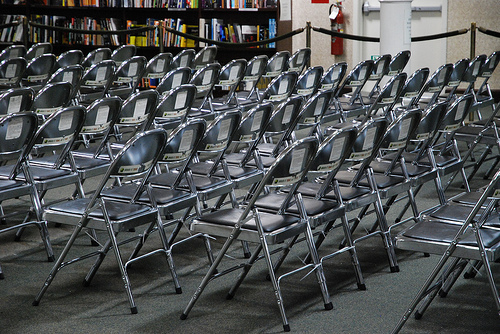
by Gilly Youner / Flickr
Today’s guest post is excerpted from Everyday Book Marketing by Midge Raymond (@midgeraymond).
My book Forgetting English came out twice—once from Eastern Washington University Press, after winning the Spokane Prize for Short Fiction—and again, from Press 53, after EWU Press closed its doors.
On one hand, it was awful to have my publisher shut down and leave me out of print. On the other hand, I got to have a second book tour, with an updated edition of my book and a spiffy new cover.
Among the best things I learned from doing two book tours for the same book, two years apart, is that The Book Tour comes in many different shapes and forms. However, the old days of publisher-sponsored, multi-city book tours are, for the most part, long gone. These days, the vast majority of authors must plan, pay for, and publicize their own book tours—no small task. And for writers who don’t have a background in publishing, publicity, or marketing, it can seem even more intimidating.
But the challenges are well worth it, and the rewards can be great. Here are a few things to consider as you begin to think about planning a tour that will best fit your needs.
1. Go where your friends are.
Choose venues that you know will draw a decent audience, i.e., always plan book tour stops and events in places where you know at least a few people who will show up, bring friends, and otherwise make sure you’ll have a nice showing.
When you start the process, check out Togather—a new tool that allows authors to gauge event interest in a specific city, gather support, and manage event logistics.
If you’re doing mostly local or regional events, spread them out so the venues aren’t competing with one another. When Forgetting English first came out in 2009, I was living in Seattle, where I did about a dozen book events—but I spread them out over the course of the year. The venues didn’t have to compete for customers since similar events were spaced months apart.
2. Team up with a fellow writer.
For my 2011 tour, I teamed up for many events with my friend and colleague Wendy Call, author of No Word for Welcome. Because our books have similar themes (both are about foreign locales, though mine is fiction and Wendy’s is nonfiction), we thought it would be great to offer joint events, with something for all readers, and we received enthusiastic responses from booksellers, community writing centers, and libraries. Best of all, we shared the workload (the cold calls, follow-ups, and creation of marketing materials), as well as the fun stuff (great events, great people, lots of wine). Even better, we could commiserate over the not-so-fun stuff (the rejections, the small crowds, the low book sales).
If your book is a good fit with another writer’s, consider setting up a few joint events, which can offer a great way to share the experience as well as broaden your audience.
3. Think outside the bookstore.
Certain times of year (holidays, for example) can be nearly impossible for scheduling bookstore events. And sometimes, no matter what the time of year, a bookstore may be booked already, or your schedules won’t align. So always be thinking beyond the bookstore.
Libraries, for example, are always open to author events, particularly if the author is local and there’s an educational component to your book or presentation. Also, look for community centers or literary centers such as The Loft Literary Center in Minneapolis, Grub Street in Boston, Richard Hugo House in Seattle, or San Diego Writers Ink in San Diego. Among the places I’ve read or attended readings are museums and galleries, cafés, universities and colleges, book clubs, historical societies … the list is endless once you start brainstorming the possibilities.
If your book is nonfiction, this in and of itself can help you find good venues. if you’ve written a book with an environmental theme, for example, seek out organizations that embrace this theme and see how you can help one another. And fiction writers, too, should look for the same opportunities—simply use your fictional characters and settings in nonfictional ways. If your protagonist is an artist, hold an event at a local arts center or in an artist’s studio; if your book is set in Thailand, host an event at a Thai restaurant; if your main character is a barista, get readers together at a local café.
You might also ask someone you know to host a literary salon, a great way to find new readers and talk about your book in a more private, casual setting. Ask a friend (even someone in another city/state, where you’ll be able to reach out to new readers) to host a salon for you at his or her home. Bring copies of the book to sell; provide whatever food, wine, etc., you’d like at the event. Then simply plan a casual gathering around your book, which might include a brief reading, discussion, and Q&A.
Research book festivals and conferences around the country, and see which ones you might attend as a reader, presenter, or instructor. Book festivals and conferences all have built-in literary audiences, and it’s also a great way to connect with fellow authors. Keep in mind that most festivals and conferences schedule up to a year in advance, so do your research early.
4. Offer something more than reading.
Unless you’re a writer whose mere presence in a bookstore will guarantee a line out the door, offer more than a traditional reading/signing. You want the event to be a win-win, so that you not only find new readers but are invited back enthusiastically when you publish your next book.
Because Forgetting English is set in eight countries across four continents, for many of my events I offered a travel-writing workshop, which brings in not only readers but writers and travelers as well. Even if no one’s ever heard of me or my writing (which is, in fact, most people), those who love to travel or write will show up to learn something. On our joint tour, Wendy and I held several mini-workshops, and we received terrific feedback from these events. Even if an event isn’t specifically about your book, you’re giving participants an opportunity to get to know you, which in turn will build interest in your work.
5. Try a virtual book tour.
This is a great option if you don’t have the time or budget to do in-person events. You’ll do many of the same things you’d do on a live, in-person tour—create buzz for your book, find new readers, and chat about your book. Keep in mind that, while virtual, this type of book tour still takes a lot of planning: You need to connect with host bloggers or websites, come up with original topics to write about, answer Q&As, and promote your tour. It’s also good practice to offer a giveaway of your book whenever you do a guest post or Q&A during a virtual tour. (Note: There’s a new service focused on virtual book events, Shindig, that you might want to consider as part of your online tour. Google Hangouts is another good option.)
Final tips
To properly schedule events, you’ll need to do some planning: create a proposal, follow up by e-mail and by phone, and work out the details with the event coordinator of the venue. During the four to six months before your book release date, set aside at least thirty minutes a day—more, if you can—to devote to scheduling your events.
Create lists of cities for events, of possible venues, of writers you can team with, etc. Spending just a few minutes a day on these lists will let them simmer in head, and spark new combinations and possibilities. After a few list-making sessions, you’ll have the beginnings of your book tour ready to go.
As you go about your everyday life, open your eyes to the possibilities for promoting your events—look for bulletin boards (at local businesses, cafés, community centers, etc.) where you can post flyers, and seek out local newspapers and magazines you may not normally read as potential recipients of your press releases.
Picture yourself at one of your events. Imagine what section of your book you might read; imagine the questions you’ll get; envision a workshop you might offer. Think of new and different places for events. Let your imagination wander—you’ll find all sorts of possibilities arising from these daydreaming moments.
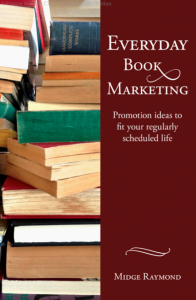 If you found this post helpful, I encourage you to check out Everyday Book Marketing by Midge Raymond (@midgeraymond).
If you found this post helpful, I encourage you to check out Everyday Book Marketing by Midge Raymond (@midgeraymond).
The post Book Tour Planning 101 appeared first on Jane Friedman and was written by Midge Raymond.
September 13, 2013
Launching an Online Community: Q&A With Author-Entrepreneur Alexis Grant
Today I have the pleasure of sharing an e-mail interview I conducted with author Alexis Grant (@alexisgrant), who just launched a new site for writers, The Write Life.
If you’re not familiar with Alexis, her background is in journalism; she’s written for a wide range of publications, including the U.S. News & World Report, the Houston Chronicle, Salon, The Christian Science Monitor, The Chicago Tribune, and many more. Since 2011, she has worked as an entrepreneur, helping small businesses with blogging, e-mail marketing, and social media—which includes serving as managing editor of Brazen Careerist.
You’ve long had your own site and blog (alexisgrant.com), where you’ve served an audience of writers, and now you’ll be maintaining both your personal brand website and The Write Life website. One of first questions that would come to any author’s mind is: Do you now have double the work for yourself? What’s the advantage of having the separate site or brand, The Write Life, instead of growing alexisgrant.com?
The advantage is we’re able to reach a specific target audience: writers. On my own site, alexisgrant.com, my focus is more broad, on careers and making your own luck. While a lot of writers do read my blog, I don’t want to write only about writing.
And yet, while building my own brand, I recognized a HUGE need for writing-related resources—which is why I created The Write Life. This new project is my baby, but it’s not directly associated with my name or my brand. We want it to live as its own brand.
Building a website and a community is a lot of work. But I don’t do it all myself. I’m in the business of building brands; my company, Socialexis, runs blogs and social media for small businesses. I have a team of about 10 awesome go-getters who deliver value for our clients, and they’re making The Write Life happen, too. I oversee the site, but I’m not doing all the legwork myself.
I should also mention that my team and I only write a portion of the blog posts on The Write Life. We’re open to guest contributors, so plenty of other experienced writers share their advice, too. We still have to edit, schedule and promote those posts, but we’re not writing everything ourselves.
What does The Write Life offer writers that they may not be finding elsewhere?
We’re looking to fill a few big gaps in the blogosphere.
First, it’s a one-stop shop. You won’t find a lot of websites for writers that cover both freelance advice and how to write fiction. Most blogs focus on a particular aspect of writing, while we’re covering everything from marketing to blogging to traditional publishing to self-publishing.
Second, we really want to create a community where you’ll hear from lots of voices. So many writers have great knowledge to share, and we want to give them a place to share it, so we can all benefit.
Third, we’re pulling back the curtain on products for writers by reviewing e-books and courses. There are so many resources out there that writers can use to improve their skills, and we want to help writers figure out which ones are smartest to invest in.
You’ve got some hard hitters who have posts at The Write Life, e.g., Chuck Sambuchino and Rachelle Gardner. How did you make that happen?
Yes! We’ve got an awesome Launch Team. This is largely a result of my own personal network, one I’ve been growing since I started blogging in 2008. Here are three things that helped us get these big names on board:
+ I had personal relationships with almost everyone on the Launch Team. Many of those bloggers were willing to join the project as a favor to me, and I’ve done what I can to help them succeed in return. Networking is so much of succeeding with a project like this!
+ We tried our best to make it worthwhile for the Launch Team. We’ve looked for ways to send traffic to their site and featured their names prominently on the site, as well as our Facebook, Pinterest and Twitter channels. We really appreciate their contributions, and we want them to feel that love.
+ We made it easy for them. This is the biggie. We didn’t ask our Launch Team for much more than two blog posts, and we did the rest of the heavy lifting for them. When you ask someone for a favor, you really want to go out of your way to make it easy to accomplish!
As far as all the guides and courses you offer writers, which one (or ones) have been the most popular?
Glad you asked this, because we just launched a new course specifically for writers! It’s called Social Media for Writers: Grow an Awesome Network on Facebook, Twitter and LinkedIn. When you sign up, you’ll get a series of 20 daily e-mails, each with ONE practical tip to help you grow your network. Several of my courses are in this format, and participants love them because it makes social media—which can feel overwhelming—doable. Plus, it’s fun.
I also offer a guide called How to Build a Freakin’ Fabulous Social Media Strategy that a lot of writers turn to for help figuring out where they should focus their efforts when building a platform online.
I see that you’ve used Facebook ads to help grow the Facebook presence of The Write Life. I can’t help but ask—because I know many authors are curious about how to use Facebook advertising effectively—if you’ve been satisfied with the experience. Any advice?
Yes! I’m really happy to talk about this because I learned a lot through this experiment. And that’s really what it was: before this campaign, we hadn’t used paid Facebook advertisements much to grow our Facebook pages.
Here’s what we learned: It works. For good or for bad, Facebook has set up their system to reward pages that pay for advertising. We worked with a strategist who specializes in Facebook ads to target the right people, and added more than 1,000 fans to our page early on as a result.
This was an investment on our part, but I believe it’s worth it because it helps jump-start the website and the brand. It’s never easy to get over that initial hump when you first launch a project and look to grow a community, and this helped us quickly build a base of loyal fans.
What are some of your favorite posts on The Write Life so far?
I love blogger James Chartrand’s post on how to become a master copywriter in just one year. We’ve also got a super piece from fiction writer Dana Bate on why the book chooses the writer—not the other way around. And freelancer Tom Ewer wrote about why he’s been able to succeed as a freelance writer.
We’re also offering a free e-book: How to Land Your First Paying Client. I hope a few of your writers grab it!
Click here to go explore The Write Life for yourself.
The post Launching an Online Community: Q&A With Author-Entrepreneur Alexis Grant appeared first on Jane Friedman and was written by Jane Friedman.
September 12, 2013
WRITING ON THE ETHER: But Wait. Do We Even Like Bundling?
Table of Contents
All Bundled Up
Who Asked for This?
And Circuses
 The Metadata Handbook
The Metadata HandbookA Book Publisher’s Guide to Creating and Distributing Metadata for Print and Ebooks, by Renée Register and Thad McIlroy
This is a one-stop guide for publishers—large, small, and independent. An essential resource for 21st century publishing, The Metadata Handbook covers:
How metadata for books operates in the real world
Metadata fundamentals and the history of metadata for books
Metadata standards and best practices
Essential metadata elements for print and ebooks
The basics of ONIX for Books, including ONIX 3.0
The basics of EPUB 3 metadata options
Available in paperback, PDF, EPUB, and Kindle formats at www.themetadatahandbook.com
All Bundled Up
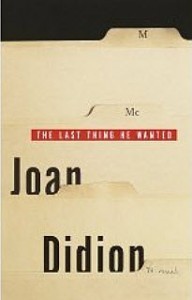
The Knopf hardback cover
As has happened in the past, Amazon seems to have some folks in the publishing world feeling that they didn’t get a chance to discuss things. “But…but…but…”
If only we’d known the Amazonians’ Kindle MatchBook deal was coming, right?
I’d have held off on buying the Kindle edition of Joan Didion’s The Last Thing He Wanted.
Which is the first book I always want.
But my hardback is in one storage unit.
My paperback is in another storage unit.
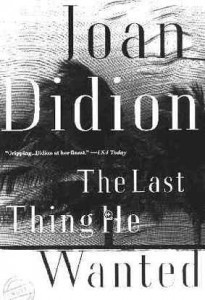
The Vintage paper and Kindle cover
And when Vintage Books finally found it in their hearts to produce a Kindle edition—no doubt because I had clicked Amazon’s Tell the Publisher You’d Like To Read This on Your Kindle button about 435 times—I bought it. On July 13, 2011.
But now?
I can read the handwriting on the MatchBook cover.
I’m going to wait.
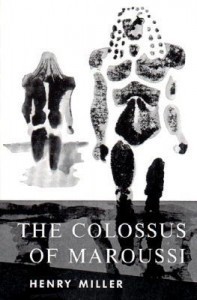
The 1988 New Directions paperback cover
To see if the good people at New Directions will clamber aboard the new plan and their Kindle edition of Henry Miller’s masterwork The Colossus of Maroussi available for @2.99 or less.
Maroussi being the other first book I always want. Don’t tell Joan.
After all, the Twitter bio on New Directions says, “Founded in 1936 by James Laughlin, New Directions proudly publishes the best literature from around the world.”
This all sounds very promising to me. Doesn’t it to you? Well, of course it does.

The New Directions second edition Kindle and paperback cover
Surely, this right-minded press will—I murmur Miller-ishly to myself—jump in and sign on to Amazon’s new program, making e-editions of print purchases from its rich list available on the MatchBook plan and deliver unto me the blue-maze Kindle version of Maroussi with its introduction by Will Self at a bargain rate.
Or will it?
That’s the question. Will publishers be down with this idea?
As we consider this Kindle-bundling turn of events, I’m going to entertain you—my Rod Serling act—with a quiet but intriguing little tour of Maroussi covers. Picture, if you will, more covers for that book than decades since it appeared in 1941.
I’d like a bundle containing every one of them, too.

Laura Hazard Owen
The question before us, however, is succinctly put, as ever, by Laura Hazard Owen, oracle of GigaOm and PaidContent, and can you guess under which of those brandings Owen will next appear? Maybe I’ll open a small Ether wagering concession on this.
Availing herself of the Kindle MatchBook FAQ document, Owen writes in Publishers will be able to use Amazon’s new ebook bundling feature for limited-time promotions:
The big caveat is that publishers have to opt in, so not every book is eligible. When MatchBook launches in October, Amazon estimates that about 10,000 titles will be available. A lot of those are likely to come from Amazon Publishing authors (whose titles are automatically included) and from self-published authors, who could opt in starting today.
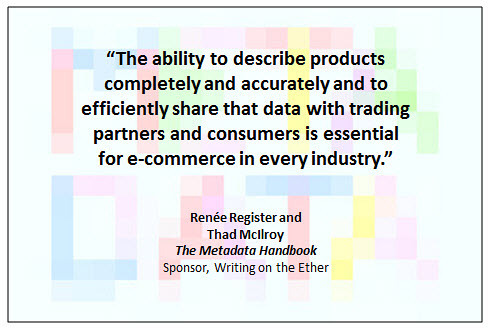 And that’s the issue. The program requires that opt-in, a buy-in from publishers, authors, rights-holders.
And that’s the issue. The program requires that opt-in, a buy-in from publishers, authors, rights-holders.
Further, as Owen discovers and updates her piece to tell us, it’s not clear at this point how short a period of time might be available, if a publisher wanted to use the MatchBook bundling offer as a promo—nor whether there’s a difference in how easily publishers and self-publishing authors will be able to operate the program. Owen:
Amazon hasn’t committed to the exact length that these promotions could be [active]. In addition, it is unclear how easy it will actually be to add and remove books from the program. But a Kindle MatchBook FAQ for self-published authors notes that authors can “enjoy the flexibility of setting a Promotional List Price for your book,” that they can “un-publish and re-publish your Kindle MatchBook title at any time,” and that, to un-enroll a book from MatchBook, “Select the title you want to opt out of the program and un-check the box labeled ‘This title is enrolled in Kindle MatchBook. Uncheck to opt out of the program.’” This makes it sound as if the process is pretty easy, at least for self-published authors.
Details of the mechanics and agility of the program, then, are to come.
Not everyone's interested in buying what you're selling. Keep that in mind when self-promoting.
— Don Linn (@DonLinn) September 10, 2013
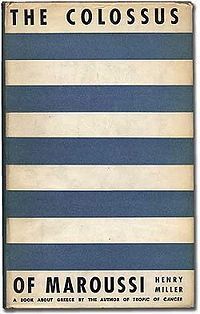
Listed at Wikipedia as the first edition cover, 1941
And in writing that piece on September 3, Owen points out, “Of the Big Five, so far it looks as though only HarperCollins has opted in, and only on some older titles.” (I’m dating it for you to flag the fact that, even now, there may be more sign-ons by other publishers. Full-service Ether.)
The program launches in October. It chimes in with an agreeable resonance, of course, with Amazon’s AutoRip service, which provides customers with Mp3 editions of music they bought in a hard medium from the company in the past.
But what’s really interesting is that reactions to the advent of MatchBook stretch about from here to the harbor at Paros, Henry. All over the map.
“Bundling,” the provision of one format with another, isn’t a new concept to us in our digi-rotic stress, of course. But, as it has done in the past, Amazon has caught many in the industry! the industry! with a move that seems somehow to confront us earlier than expected.
Let’s look at some of what’s out there among the Maroussi covers.
Are you looking for reasons to visit your bookshop this Saturday? Look no further. @booksaremybag pic.twitter.com/kmJg7w4Yau
— IndieBound:UK (@IndieBound_UK) September 11, 2013
Who Asked for This?

Kate Pullinger
One of the first questions that reached me as we were getting the news of Amazon’s MatchBook program came from my friend and colleague Kate Pullinger.
She is frequently called a “digital author” in the UK. I find her wholly human.
Pullinger rightly wanted to know if there’s any research to indicate that consumers actually have asked for bundling.
As usual, Carl Kulo at Bowker was able to help. 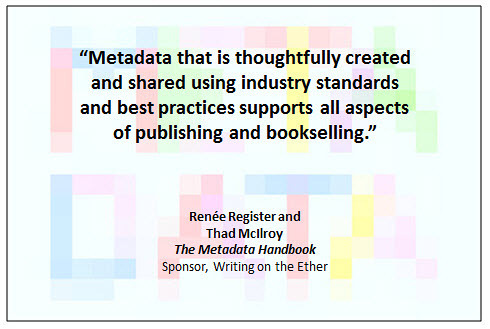 With permission (thanks!) from the Book Industry Study Group (BISG), with which Bowker Market Research produces a study on Consumer Attitudes Toward eBook Reading, Kulo can share this insight with us:
With permission (thanks!) from the Book Industry Study Group (BISG), with which Bowker Market Research produces a study on Consumer Attitudes Toward eBook Reading, Kulo can share this insight with us:
From our survey we know that 48% of ebook buyers are willing to spend extra to have a print book bundled with their ebook. Of those with interest, the median price they will pay is $5.
Tonight I learned a lot at the annual AAR party (nice to see everyone who came; those who didn't, you were NOT missed HA HA I'm kidding)
— Ginger Clark (@Ginger_Clark) September 12, 2013
Notice that this particular data runs “backward” to the case in hand: the Bowker-BISG study is talking about folks who buy an ebook first, then are hypothetically offered a print copy as part of a bundle. It’s that print copy that almost half the consumers surveyed are saying they’d find attractive enough to consider a median $5 extra

Thad McIlroy
Meanwhile, there seem to have been no qualms for our new Ether sponsor (welcome!) and publishing analyst Thad McIlroy, co-author with Renée Register of The Metadata Handbook.
In Amazon’s Kindle MatchBook is Brilliant, McIlroy writes:
It was my mistake to think that the bundling initiative would come from large publishers and then spread like wildfire. More fool I…Waiting for the big publishers could have taken forever.
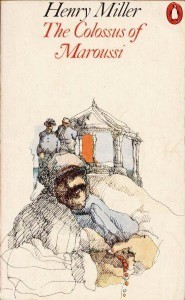
A Penguin UK edition’s cover dated 1972 on a used book site
My other mistake was failing to consider bundling digital with books already purchased. That’s Amazon’s masterstroke. Publishers don’t know their customers by name (as has been observed with painful frequency). Amazon knows everything its customers have ever purchased.
Quite right. One of Amazon’s promises in the MatchBook program is the ability for customers to quickly look at all their print purchases in the past and, presumably, cherry pick available discounted ebook editions of those they like best.
McIlroy sees authors as the likely drivers in moving publishers to hunker with Seattle on Matchbook:
Larger publishers will surely drag their feet on joining this program. Until they hear from some of their more influential authors who demand that they do so…There’s never been any mileage in the argument that print is better than digital or the opposite. Each offers unique advantages. What better way to resolve the debate than to package both, discounting the version that costs the least to “manufacture” (i.e. digital, which, because of conversion costs, is not quite free) and allow readers to enjoy the strengths of both.
The Booker shortlist Day – a time for every author not on it to look away and remind themselves writing is not a competition.
The Booker shortlist Day – a time for every author not on it to look away and remind themselves writing is not a competition.
— Jonny Geller (@JonnyGeller) September 10, 2013
One influential author already heard from on the point is Hugh Howey
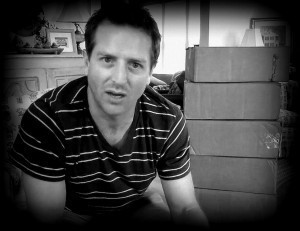 He had raised the concept of bunding in a Publishing Perspectives interview (ahead of our CONTEC Conference at the Frankfurt Book Fair) days before the Amazon program was known.
He had raised the concept of bunding in a Publishing Perspectives interview (ahead of our CONTEC Conference at the Frankfurt Book Fair) days before the Amazon program was known.
In Hybrid Author Hugh Howey on Self vs. Traditional Publishing, he says:
Ebook-plus-audio or ebook-plus-print: ebooks should be seen as both an add-on and an entrance to other products. They should not be seen as competition to print and other formats. Giving away an ebook with every sale of a hardback would do wonders for the hardback market.

Joe Wikert
But Joe Wikert—formerly with O’Reilly Media and a highly valued colleague for many of us for his years of work with Kat Meyer on the Tools of Change program—writes it a different way in his blog post, The most surprising aspect of Kindle MatchBook:
As a reader I’m thrilled about MatchBook, but I have to admit it’s yet another reason why I’m kind of happy to no longer be in the book publishing business. MatchBook will only help erode the perceived value of ebooks. When the original Kindle launched in 2007 Amazon convinced us that ebooks should be $9.99 or less. MatchBook will now cause consumers to look at ebooks as a $2.99 (or less) throw-in or afterthought when you buy the print book.
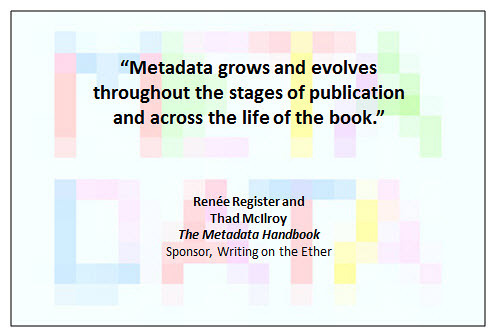 If Wikert, now director of strategy and business development at Olive Software, sounds tough on Amazon, make no mistake—he’s not letting publishers off the hook:
If Wikert, now director of strategy and business development at Olive Software, sounds tough on Amazon, make no mistake—he’s not letting publishers off the hook:
Publishers have had plenty of opportunities to take more control over their destiny up to now though. What I’m talking about is the need to create direct channels to their customers. Since most don’t bother with that, they’ve simply handed the keys to the kingdom over to Amazon and they have no one to blame but themselves if they’re unhappy with a program like MatchBook.
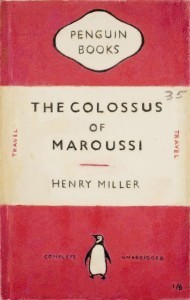
A 1950 paperback edition from Penguin
And Wikert is predicting that the publisher-buy-in issue at the outset of MatchBook is a testing ground that can be superceded by the retailer later, if it wants:
Here’s what I think will happen: Amazon initially gave publishers the option to participate in MatchBook. Most didn’t. Amazon moves forward with the MatchBook launch next month and they’ll closely monitor the numbers. If the results shows Amazon could open this up to all ebooks without adding significantly to the company’s overall quarterly financial loss, they’ll announce a much broader version of MatchBook down the road, with our without publisher approval.

Chad W. Post
The idea that MatchBook’s bundling can “only help erode the perceived value of ebooks,” as Wikert puts it, gets a long, hard stare from Open Letter publisher Chad W. Post. In his MatchBook is NOT a Dating Service for Readers, Post writes that “this discounted ebook version (of a hypothetical book) is only available to customers who also buy the print version.” The prior buy of a print edition, for Post, is the special circumstance that mitigates the lowered cost of the ebook.
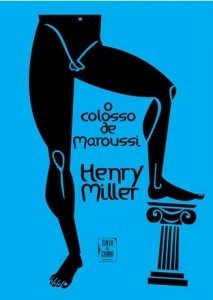
The cover of a Portuguese translation from Tinta da China, 2011
“If Amazon was reducing all ebooks to $2.99 or free,” he writes, then those who object on the grounds of a general devaluation of ebooks might have a point. But as it is, the less expensive option on an ebook price is contingent on the customer having bought a print copy.
Here is Post’s clarifying approach to the rationale:
As things currently stand in the book world, if you bought a copy of Javier Marias’s The Infatuations because you love Marias and are willing to shell out $20 for the hardcover version, and then, say, you wanted to take this with you to read Iceland, but, due to the fact that you’re schlepping other stuff, you don’t necessarily have the room for more than your Kindle, you’d have to pay an additional $12+ to get the eversion. Essentially, publishers are treating these two different “containers” (the physical book, the ebook) as separate items to be purchased separately. But that’s madness.
Putting aside the fact that basically no one reads these days anyway, it’s crazy to put your customers in a position where they have to choose between buying either a print version or an e-version of a book when the fixed costs to you (the publisher) are accounted for in the purchase of either one of these. Instead, offer three options: the print book for $20, the ebook for $15, or both for $23. I’d probably choose $23, or maybe $15, but I would NEVER choose to pay $35 to get both. And when a customer has so many other entertainment options, it seems like the smartest thing to do is to make things simple and keep them happy.
And that’s the Amazon genius, of course: the primacy of the customer. The reader.
Sharp analysis: http://t.co/naqmWs87PY And if you need a "plucky startup", you know who to call

— Michael Kowalski (@micycle) September 4, 2013
And Circuses
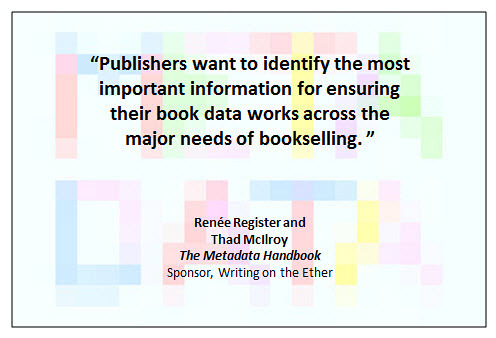 What may be important at a moment like this, in fact, is to purposely look beyond the nuanced, industry-experienced viewpoints of publishing experts and see what the street thinks of something like MatchBook.
What may be important at a moment like this, in fact, is to purposely look beyond the nuanced, industry-experienced viewpoints of publishing experts and see what the street thinks of something like MatchBook.
You remember the street, right? Populated by non-publishing people. Many of them readers. Out there, nobody’s weeping about the difficulty of writing a book, nor debating the agonies of a traditional publishing business blindsided by the demonic digital disruption.
And those folks are—despite older business models’ efforts to “control the market”—paying the piper.
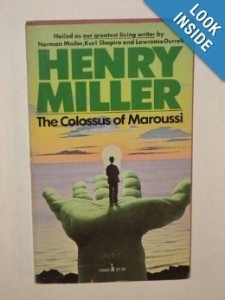
A somewhat ambitious 1975 Pocket Books edition cover
Here’s CalvinAyreNews in London—”Gambling News With an Edge”—where Lee Davy writes Amazon AutoRip and Kindle MatchBook Make Physical Media Sexy Again. It’s in the Gadgets section:
Grab that bedpost tight and prepare to be rocked. Amazon Autorip and Kindle MatchBook have donned their silky black stockings, and slipped on those stiletto heels, as they breathe some much needed sex appeal into physical media.
After extolling the virtues of Amazon’s AutoRip for music lovers, if not sturdier bedposts, Davy turns to books:
In October, US Amazon customers are going to be able to join Kindle MatchBook. A service that allows you to purchase a Kindle version of a print book at a heavily reduced price, and in some cases, even for free.
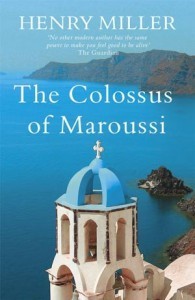
Cover of a 2007 Summersdale paperback edition
Once again Amazon will look after its loyal customers by allowing their back catalogue of physical books to be downloaded onto their Kindle for a knock down price, going back as far as the creation of the online bookstore in 1995. The announcement is not only great news for consumers, but also authors and publishers who will see an increase in revenue through purchases of back catalogue choices…Who would have thought it? A company that actually provides value for its customers…whatever next?
See how it plays on the curb? In this interpretation, authors and publishers, like consumers, are the beneficiaries of a big old, ’bout time, enlightened initiative. “Controlling the market” seems a quaint, Quixotic concept, doesn’t it?
Incremental revenue + E&P bundling + reason to switch to Amazon + reason to shift to digital + incentive to digitize = WIN for #AMAZON
— Eoin Purcell (@eoinpurcell) September 3, 2013

Nick Wingfield
Going back to Pullinger’s question, though, Nick Wingfield at the New York Times’ Bits blog, in Amazon Pairs Print and Digital Books With New Program, starts with a doubt that the public on the street is really crying for both formats:
For most readers, print and electronic books are an either-or proposition. There just isn’t a compelling reason to buy both editions of one book, at least not at full price.
Amazon is about to test how much appetite there is for combined print-and-digital book purchases if it cuts the price of Kindle books to less than that of a Starbucks latte.
I like the way Wingfield is able to look at this as a “test.” That’s refreshing.
There’s little doubt some book fans exist who are as enthusiastic about the benefits of e-books as they are wistful for the sight of colorful book spines on their walls. The question is how many of them there are.
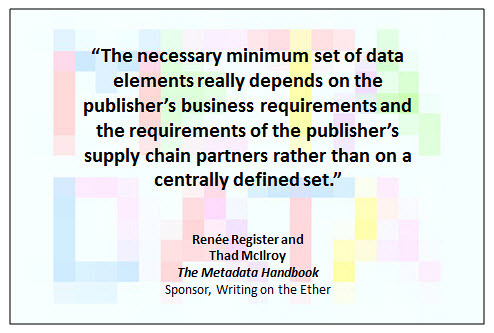 Riffing on Wingfield’s write, though, Rebecca Greenfield at The Atlantic, in Amazon’s Kindle MatchBook: Good Idea, Not Such a Great Deal, doesn’t have much time for the “devaluation of ebooks” argument:
Riffing on Wingfield’s write, though, Rebecca Greenfield at The Atlantic, in Amazon’s Kindle MatchBook: Good Idea, Not Such a Great Deal, doesn’t have much time for the “devaluation of ebooks” argument:
After all, e-books don’t cost that much in the first place — the average price of the 25 most popular digital reads hit an all time low at the end of August, at $6.33, according to Digital Book World [DBW]. While that is higher than the prices offered in the MatchBook bundle, many e-books sell for less than that $6.33 price, falling at or below $2.99. So while the popular e-book… J.K. Rowling’s Cuckoo’s Calling goes for $9.99, third on the Amazon e-book best seller list is High Heat: A Jack Reacher Short Story, at all of $1.99. Divergent — the popular Y.A. franchise headed to the theaters — sells for just $3.99. In other words, the $2.99 deal from MatchBook only looks like a deal until you realize how cheap most e-books already are.
Also, let's hope Random House Kids sell a lot of the Dr Seuss ebooks before they sign up to Matchbook. Can u imagine how many pbooks bought?
— Sam Missingham (@samatlounge) September 5, 2013
And Greenfield’s piece was written before this week’s DBW list showed another drop in that average best-selling ebook price to a new record in the life of the list.

Deanna Utroske
In New All-Time Low Average Price for Best-Selling eBooks, DBW’s Deanna Utroske writes on Wednesday of this week, September 11:
[The] average price dropped significantly for titles on the best-seller list. This week the price sank by nearly $1.00 to the new all-time low of $5.41.
Greenfield’s point comes into sharper focus: what devaluation?
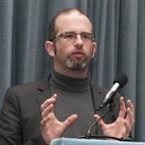
Alastair Horne
We can look to our colleague Alastair Horne for the kind of suggestion that few publishers may want to hear but might do well to consider. In Two and a Half Thoughts on Amazon’s Matchbook at The Bookseller’s The FutureBook, note Horne’s unmentioned use of an image of a bridge.
The advantage Amazon gains from MatchBook lies primarily in drawing new people into its Kindle ecosystem.
Horne looks at that $2.99-or-less price of a bundled MatchBook ebook and notes:
That they’re not asking for more suggests that both parties may have learned the key lesson from the music industry’s decline: that alienating your most valuable consumers is a sure route to irrelevance.
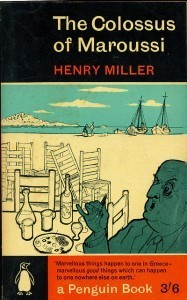
Cover of a 1963 Penguin paperback edition
And then he takes it, for some publishers, from the unpalatable to the unmentionable:
Perhaps now may be the time for publishers to drop DRM, or at least the form of DRM that ties readers to a single bookstore’s device or app. If readers can read their new ebooks on any platform, the gain to Amazon is at least mitigated.
It’s closing in, isn’t it? To contemplate giving up DRM in order to fend off the bridge-too-far of MatchBook’s attraction?—traditional publishing may be running out of options.
Conversations about MatchBook will be struck up, you can bet, at the upcoming DBW Marketing + Publishing Services Conference, at Writer’s Digest Conference West, at Frankfurt Academy’s CONTEC Conference, at Books in Browsers—”wherever fine books are” discussed. It represents another potentially pivotal evocation of what the digital dynamic really means for literature. And it’s another such moment in publishing keyed on Amazon’s leadership.
Wingfield at the Times takes us out sweetly on this one, with a wry note on the Colossus of Seattle:
Jeffrey P. Bezos, Amazon’s chief executive, is fiendishly good at selling people things they didn’t necessarily know they needed. If he can’t sell two books for the price of a bit-more-than-one, then it’s unlikely anyone can.
And what do you think? Who stands to gain from MatchBook? Who could lose? If you’re a publisher, how do you feel about signing on? If you’re an author, are you good to go or not so sure the deal works for you?
 The Metadata Handbook
The Metadata HandbookA Book Publisher’s Guide to Creating and Distributing Metadata for Print and Ebooks, by Renée Register and Thad McIlroy
This is a one-stop guide for publishers—large, small, and independent. An essential resource for 21st century publishing, The Metadata Handbook covers:
How metadata for books operates in the real world
Metadata fundamentals and the history of metadata for books
Metadata standards and best practices
Essential metadata elements for print and ebooks
The basics of ONIX for Books, including ONIX 3.0
The basics of EPUB 3 metadata options
Available in paperback, PDF, EPUB, and Kindle formats at www.themetadatahandbook.com
Main image: iStockphoto – Rasica
The post WRITING ON THE ETHER: But Wait. Do We Even Like Bundling? appeared first on Jane Friedman and was written by Porter Anderson.
September 11, 2013
Business Is Personal: 5 Common Networking Mistakes
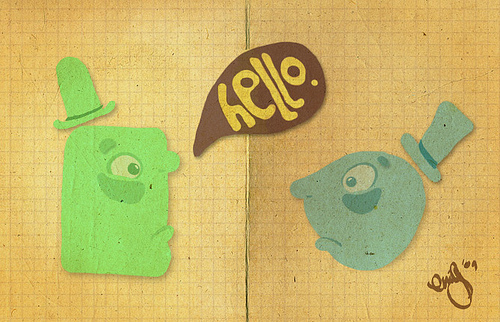
by Emily Barrera / Flickr
Today’s guest post is by author and freelancer Christina Katz (@thewritermama).
If I had to give one piece of networking advice to give to writers, it would be this: slow down. Networking is not a race. The faster you rush, the more fleeting your success is going to be, and what folks are going to remember is how desperate you seemed in the process.
Of course, I still make plenty of mistakes on a regular basis, and I’m sure you will too. A certain number of mistakes are required for career growth. Fortunately, most people can tell the difference between the-ends-justify-the-means networking and “Oops, sorry about that. It won’t happen again.”
Here are common mistakes that many writers make—and I’ve made some of these, too.
1. Withholding information to get what you want, especially if full disclosure may change the outcome.
When you legitimately need a favor (whether of an old friend or a new one), ask for it in a humble, straightforward manner. That’s the best way to ask anyone for anything, anyway. For example, if you approach a known author to write a foreword for your forthcoming book, and you intend to have more than one person write a foreword, then this should be disclosed in advance. It might not affect either decision, but then again it might. Therefore the appropriate thing is to share your intention.
When you partner with people, and certainly when you ask for a favor, it pays to be forthcoming. Also, never assume that friendship is a shortcut to bypass your best effort, either when asking for help or offering help. I’m sure the last thing you want to do is put your friend in an awkward position or make her feel that you take her for granted.
2. Getting aggressive with your lunch or coffee invite.
Don’t decide someone you admire had better have lunch or coffee with you—or else.
Here’s the worst situation I’ve experienced: I’m on Twitter and receive a DM from a Portland, Oregon, woman whom I have never met and do not know. She invites me to coffee to chat and “pick my brain.” When I politely decline, she curses at me and blocks me on Twitter.
Like anyone else, I have to keep the commitments I’ve already made, and respect the needs of my family and myself. My advice to you, my dear writer friends, is to never behave like this person.
Or consider this: A speaker at a medium-to-large writers conference is typically kept on a break-neck schedule throughout the weekend so the organization can maximize his visit. Often the speaker has traveled from another time zone and is making the appearance on top of a busy work week, which will swiftly be followed by another. Sleep is typically lost, friends and family are put on hold, and travel does not always go as planned.
If the speaker is a personal hero of yours, should you expect him to make exclusive time for you based on your enthusiasm and past devotion?
No. Temper your enthusiasm and adjust your expectations. There is a very good chance that conference administrators have worked overtime to make speakers as available to attendees as possible. If you want to show your support for someone you admire, attend his talks, sign up for and even pay extra for a closed audience, like in a pitch or in a group pitch.
Of course, if you have an opportunity to stick out your hand, introduce yourself, and express your appreciation, without taking too much time, do so. Experts love to meet people who genuinely admire their work. He might even have a few moments to chat, but don’t be offended if he is running off to catch a plane or needs to call home to check on a loved one
3. Being sneaky with your pitch or ask.
Don’t sign up for e-newsletters or follow folks on social media so you can reverse pitch. When I get long sales pitches from folks who have just joined my e-mail list, I feel spammed.
It’s okay, of course, to make gentle offers to people who follow or friend you, but don’t pitch them more than you serve, or they will quickly tune out. Never send auto-pitches to people or post your announcement on their Facebook page. And if I follow you on Twitter and I get an auto-pitch back, that’s not connecting, that’s blind selling.
Build trust first, and don’t use social media to put others on the spot. That’s bullying. If you are concerned that your request could be taken the wrong way, add the line, “No pressure, of course”—and mean it.
4. Helping yourself to other people’s resources.
You wouldn’t leave with the silver if someone invited you to dinner. You wouldn’t pick all the fruit off someone else’s tree. The same courtesy applies to all online networking situations. So if you are friending and following people just so you can pinch their friends and followers, you should stop.
Also, never assume that your participation in a group or event is a leadership or marketing opportunity for you. You may be guilty of this if you habitually add people to your e-mail lists or social media groups en masse after events or group gatherings (online or off), rather than treating each person you meet as an individual.
Finally, watch out for the “fair game” mentality. This is the idea that someone else’s shared information is yours for the taking, just because the other person was naïve enough to share it. True networking is connecting with a person here and a person there, based on mutual respect that all adds up to a bigger group over time. Other people’s networks are not your networks. If you discretely pilfer other people’s resources, they may never know, but you will.
5. Being unable to say no or hear no.
If someone asks for something you can’t or don’t wish to give, you have the right to say, “No, thanks.” You also have the right to say, “Hey, thanks for your consideration,” if you ask and are turned down.
I once said no to a testimonial requested on a self-published book by a friend I hugely admire. I still respect the person, but I was not comfortable with my name on this particular project. And I have learned that saying yes when my gut tells me no never pays. Kindness to the point of caretaking other adults’ feelings will taint your relationships if you let it, and leave you miserably overcommitted.
As you keep the communication respectful and kind, no harm will be done. But if there is harm, at least you know you were true to yourself.
On a final note
Business is personal. In the long-run game, anyone who treats business as though it is not personal is going to end up stepping on toes and leaving a trail of poor impressions. In relationships where one person is more known than the other, never assume anything, and always ask respectfully for what you need, to avoid stepping on toes.
Maybe it’s time for us to realize as a social collective that relationship building is not guerilla marketing. Your success is not a done deal, and it’s presumptuous to treat other people like they are standing in your way or not doing enough for you. Success is a journey and the path is paved with the support of others.
There are two types of people others can easily recall: those who were exceptionally conscientious and professional, and those who were thoughtless and self-absorbed. Be the first kind and you will be remembered for all the best reasons.
The post Business Is Personal: 5 Common Networking Mistakes appeared first on Jane Friedman and was written by Christina Katz.
September 10, 2013
The Power of Understatement in Fiction Writing

© Salim Photography / via Flickr
Today’s guest post is excerpted from Dear Writer Revisited by Australian novelist Carmel Bird (@carmelbird).
“It is seldom advisable to tell all.”
—The Elements of Style by Strunk & White
One of the most useful and powerful devices for the fiction writer is understatement. You tell the reader less so that the reader knows more. Instead of having everything spelt out, the reader is given, in a very careful way, just enough information for the imagination to go to work. From understatement the reader can derive great pleasure and satisfaction.
In popular fiction, and in romantic fiction, for instance, understatement is rarely used. This kind of fiction is often an exercise in overstatement. I will give you an example of overstatement from a romantic novel, and then two examples of understatement. All three pieces of writing are meant to give the reader an image of a man and a woman embracing. The images in the second and third “literary” examples are achieved only in the mind of the reader, whereas in the first one the romantic writer explains things graphically for the reader. Many readers love this kind of writing. How you do things depends on what effect you are aiming for. I generally prefer understatement myself.
Overstatement
“He advanced towards her with a purposeful expression, and she backed away, laughing, trying without success to ward him off with her hands. He caught her to him and kissed her, bending her dramatically over his arm like a twenties film heroine, and exploring her lips unmercifully until she could do nothing but wind her arms around his neck and kiss him back.”
—Daphne Clair
Understatement
“And by the harbour, in the midst of the wagons and barrels, at every street corner, the citizens opened their eyes wide in amazement at the spectacle, so extraordinary in a provincial town, of a carriage with drawn blinds, continually reappearing, sealed tighter than a tomb and being buffeted about like a ship at sea. Once, in the middle of the day, when they were right out in the country and the sun was beating down at its fiercest on the old silver-plated carriage-lamps, an ungloved hand stole out beneath the little yellow canvas blinds and tossed away some scraps of paper, which were carried off on the wind and landed like white butterflies in a field of red clover in full bloom. At about six o’clock the cab drew up in a side-street in the Beauvoisine quarter, and a woman got out; she walked away with her veil lowered, and without a backward glance.”
—Gustave Flaubert
“In town, the lights were going on, and we were sitting on the bank on the other side of the river, and we were full of what they call love, that rough discovering and seeking of each other, that sharp taste of one another—you know, love.”
—Italo Calvino
Of the quotation from Madame Bovary, I think it is fair to say that once you have read it, you will never forget it. The imagery is so vivid and sexual, and your imagination is given the chance to see what is going on inside the carriage without your being told about who did what to whom.
Take a scene from your work, and rewrite it in two ways, first using overstatement and then understatement. You will see how dramatically the use of understatement can affect your work. You could try showing the two versions to your potential readers to see how each version is received. Don’t be surprised if people seem to prefer the overstated version. Reading understatement requires the reader to do more work than reading overstatement. It depends on which kind of readers you are looking for, but it also depends on what kind of stories you want to write, and what kind of stories you enjoy reading most yourself.
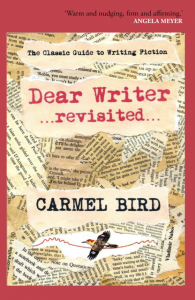 If you enjoyed this post, then I encourage you to check out Dear Writer Revisited by Carmel Bird. You can find the paperback on Amazon, and a digital edition available direct from the publisher.
If you enjoyed this post, then I encourage you to check out Dear Writer Revisited by Carmel Bird. You can find the paperback on Amazon, and a digital edition available direct from the publisher.
The post The Power of Understatement in Fiction Writing appeared first on Jane Friedman and was written by Carmel Bird.
September 9, 2013
Best Business Advice for Writers: August 2013
Best Business Advice for Writers is a monthly link round-up where I share the best online articles focused on the business of writing and publishing. Share any best reads you’ve found lately in the comments.
If this round-up is helpful, then you might be interested in the digital magazine I’m launching this fall, Scratch. It’s all about the intersection of writing and money. Click here to sign up for an alert when we launch.
23 Literary Agent Queries That Worked by Jason Boog (@jasonboog)
Says MediaBistro’s Jason Boog, “We’ve collected 23 different agent pitch letters that actually worked in a variety of genres. We’ve gathered these samples from agency websites, agent blogs and the AgentQuery forums. Click here for the resource list at MediaBistro.
Five Legal Issues All Writers Need To Be Aware Of by Jessica Meddows (@JessicaMeddows)
An excellent post on recurring and confusing issues for most writers: copyright, permissions, defamation, and getting paid. Go read at LitReactor.
Strategic Ways to Give Away Books by Jody Hedlund (@JodyHedlund)
Whether you’re traditionally published or self-published, giving away your books before and after publication is a tried-and-true marketing tactic to get reviews and publicity. This post from author Jody Hedlund discusses a variety of best practices for giving away books.
eBook Preorders Help Indie Authors Hit Bestseller Lists by Mark Coker (@MarkCoker)
Traditional publishers have long used pre-orders as a marketing tool to get on bestseller lists and build word of mouth. Now, pre-orders are becoming available to independent e-book authors. Smashwords’ Mark Coker discusses the benefits at The Huffington Post.
Tips From a Bestselling Author: Joanna Penn On Marketing by Kristen Jett (@KristenJett)
An excellent and long Q&A on book marketing and author platform—with one of the foremost authorities on the matter, novelist and nonfiction writer Joanna Penn. Especially recommended for unpublished authors and anyone on the brink of a book launch. Read the interview at Pen & Muse Press.
How to Sell Books From Your Website: Top 3 E-commerce Solutions for Authors by Anne Hill (@annehill)
If you’re selling your own books through Amazon and other online retailers, then you should also consider selling directly through your own website. Anne Hill reviews three different possibilities for making that happen, over at The Book Designer’s blog.
A scientific guide to posting tweets, Facebook posts, emails and blog posts at the best time by Belle Beth Cooper (@BelleBethCooper)
An interesting overview of the “best” posting times for click-throughs and engagement across social networks—as well as for sending promotional e-mails. I wouldn’t necessarily use this as a rulebook, but it does provide insights that might help explain—if you’re struggling—whether that struggle is related to bad timing. Click here to read the post at The Next Web.
Union and Guild Resources for Writers by Jason Boog (@JasonBoog)
Not many writers think about joining a guild or union, but they can be very helpful when you need legal advice, contract reviews, discounts on health insurance, and more. Click here for the resource list at MediaBistro.
Enjoy this round-up? Don’t miss earlier installments full of goodness.
The post Best Business Advice for Writers: August 2013 appeared first on Jane Friedman and was written by Jane Friedman.
September 5, 2013
WRITING ON THE ETHER: Pattern Recognition and Writerly Advice
Table of Contents
In Praise of the @GreatDismal
Contradicting Our Contradictions
“You haven’t done this?”
Two Ethers Ago: Amazon’s Goodreads
In Praise of the @GreatDismal
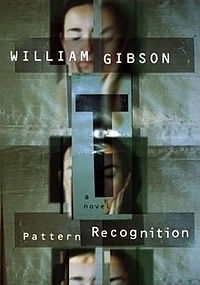 So taken was I with William Gibson’s 2003 Pattern Recognition that I bought the jacket. I still have and wear my Buzz Rickson William Gibson Collection MA-1 Intermediate Flying Jacket. It got me through a Danish winter. Say no more.
So taken was I with William Gibson’s 2003 Pattern Recognition that I bought the jacket. I still have and wear my Buzz Rickson William Gibson Collection MA-1 Intermediate Flying Jacket. It got me through a Danish winter. Say no more.
Gibson’s book, which I recommend if it’s new to you, is focused on a branding specialist with an uncanny knack for recognizing patterns.
She’s a fascinating, strong lead, Gibson’s Cayce Pollard—not least because she’s effectively allergic to the very logos and other trappings that corporate clients might spin from her genius.

William Gibson – photo: Michael O’Shea
I’d like to have seen what the late director Anthony Minghella could have done with Gibson’s book; it lives in the sorts of personality-loaded textures Minghella loved. (He wrote and directed the screenplay of Patricia Highsmith’s The Talented Mr. Ripley, and won the Academy for his direction of The English Patient.)
Now, this is a somewhat sauntering entry into today’s column, isn’t it?
That might give you a clue a to the sort of pattern recognition I tend to find myself doing—or flattering myself that I’m doing—as I ply my journo-ferret act through the Ether’s sister gases of the industry! the industry!…blog posts, news articles, survey results, book-release details.
Autocorrect. My pal Loren Ipsum, yeah.
— William Gibson (@GreatDismal) September 1, 2013
I’m no Cayce Pollard, not even in my Buzz Rickson. But I see small consistencies running alongside me from time to time, clever spacings between them, the same slant of light flashing around them. Sometimes you’ll see me tweeting something as your “Blog Sommelier,” suggesting you pair one writing with another.
3 Rights of a Novelist: 1) To have a cover that reflects the book’s content 2) To promote the book, not the author 3) To break a deadline — Jonny Geller (@JonnyGeller) September 3, 2013
In that vein, I want to show you a small collection of pieces that I think—and maybe I hope—are indicative of a positive drift in the digital disruption for authors. Being blissfully (or shamefully) science-free, I’m not concerned here about whether three moves make a mamba or four comments constitute a conga line.
I’m not saying “trend” or “meme” or “tide” or “surge” or “migration” or “my gracious,” either. I’m simply saying, hey look at this:
This will seem like an odd question from someone who expends a lot of energy giving writing and publishing advice in a half-dozen arenas: attending a weekly critique group, writing a monthly post here at WU, participating on online writing forums and Facebook groups, fielding e-mails from aspiring writers, retweeting links to smart writerly advice through Twitter, and on and on: What’s the point?

Jael McHenry
That’s where I met her in person, in fact. Jael McHenry is a fellow Writer Unboxed contributor, and we met in the gorgeous home of Jay and Christy Cashman in Boston during Grub Street’s The Muse and the Marketplace conference—which featured about 800 people doing their best to make the most of a lot of “smart writerly advice.”
Do you really need writing advice? Following advice perfectly doesn’t make anyone into a great writer. You can follow every rule and still write clunky sentences, unbelievable plots, and wooden characters.
Her piece is Is Advice a Vice? And you can recognize a pattern of just such questions right now.
I’ve found that one of the most difficult parts of teaching for me is that the students never learn, if you will: the class just keeps coming in new, term after term, fresh and needing the same material the last one did. To a teacher, the world can appear perpetually in need of instruction.
I RT & agree w @MikeShatzkin so often that it’s a relief to say he is quite wrong on future of editors: http://t.co/4KtOzgkAy8 @twliterary
— Peter Ginna (@DocSyntax) September 4, 2013
And with so many people newly heading to that International Kitchen Table to write—internet-inspired aspirationals—the advice mill, the training hubs of our big conferences, the special exchanges of “tips ‘n’ tricks,” sure, all certainly have a place. But how well do we handle all this?
Soon you’ll crack open a fortune cookie to read: The wisest writer puts his or her manuscript in a drawer for a month, and then looks back at it with fresh and rested eyes. Lottery: 06-18-07-04-25-11
(OK, whichever of you creates A Writer’s Fortune cookies, I get a cut of that action, call for instructions on where to deposit those checks to me.)
There is a lot of advice out there. Some of it is superb, truly helpful, first rate mind-opening guidance. One of the best examples of this I’ve run into lately was Chuck Palahniuk’s piece on thought verbs. I wrote it up in Ether for Authors at Publishing Perspectives, in Craft: Maybe It’s Not the Thought That Counts.
But how many of us really know how to use all this advice? Particularly when much of it is written by writers for other writers, how much of it is a case of the sight-impaired leading the hard-of-hearing?
Does anyone ever worry (you may remember that I like this analogy) that all these how-to books for writers by other writers start to come across like John Updike’s ladies of the church who fund-raise by selling cupcakes to each other?
Before we get back to McHenry, let’s look at another take on how so much of this advice lands on us.
Feeling nostalgic for the time when new technologies opened up the world of literature. #notanymore #callmecynical — Carolyn Kellogg (@paperhaus) September 3, 2013
Contradicting Our Contradictions
I’m sure you’ve read countless books and blog posts on methods of writing your book. Perhaps you’ve been advised to write a sh***y first draft, a la the incomparable Anne Lamott. Alternatively, you may have heard the advice, edit as you go, so that your revisions are not so overwhelming. Hmm. Which method to choose?

Rachelle Gardner
This is the literary agent Rachelle Gardner, in Have It Your Way.
And what about the “plotters vs. pantsers” debate? Some writers prefer to plot out their whole novel and work from an outline. Others call themselves “seat of the pants” writers — they have a rough idea of where the story is going but they don’t really know until it unfolds itself as they write it. (Sounds scary to me, but whatever.)
Gardner’s piece goes for the creativity cycle crowd:
There’s the whole “time of day” issue. Some folks swear you’re at your most creative in the early hours, and insist that you should get up before dawn and hit the computer. But others are aware that they’re most creative late at night.
And critique groups:
Many people swear by them. I recommend them all the time. But… critique groups don’t actually work for everyone.
Her piece appears within three days of McHenry’s.
Enjoy special travel rates to the #Frankfurt Book Fair 2013 from anywhere across the #QatarAirways global network: http://t.co/2HJOej3GWB — Qatar Airways (@qatarairways) September 4, 2013
“You haven’t done this?”
If you send a rough draft to an agent, it’s going to get rejected. That thing better be polished almost to the point of self-publication. That means you workshopped it, had it critiqued, had some beta reads, have done seven, eight, nine full passes through the work on your own. You’ve read it aloud, looking for typos. You’ve had a text-to-speech program read it aloud, listening for typos. You haven’t done this? Neither path will lead where you hope.

Hugh Howey
“Neither path,” in Hugh Howey’s The Work is the Work. The Path is the Path. refers to self-publishing vs. traditionally publishing. Writing from the 71st annual WorldCon in San Antonio—between McHenry’s posting and Gardner’s—Howey is struck by what sounds almost like a paralyzing quandary for some:
I’m seeing this conundrum a lot at WorldCon. I’ve met a lot of authors weighing their options, seen a ton of hands shoot up in panels hoping for that one last piece of advice to push them off the fence one way or the other. There’s a path on both sides of that fence, and writers can see crowds beating the grass flat. They can see the books that lie along either way.
 The push and the pull of this decision, in particular—to self-publish or seek a contract—is, as Howey implies with compassion, relatively new on the scale we’re seeing it.
The push and the pull of this decision, in particular—to self-publish or seek a contract—is, as Howey implies with compassion, relatively new on the scale we’re seeing it.
In the past, some lone pioneers tried to forge their own self-sufficient trails and others paid through the nose for the vanity-publishing route. But a movement toward self-publishing on the scale we’re seeing now is unprecedented. Much advice about it is, by definition new. Some of it, surely, is untested.
Howey:
We fear self-publishing because of the stigma, but it is rapidly fading. We fear it because there are so many bad books out there, but those aren’t your books. We gaze longingly at the beautiful hardbacks lined up in the store windows, but those aren’t yours either. And the path didn’t make them that way. Not all that way.
And, like McHenry and Gardner, what Howey is here to tell you is that you know what you need. You know, or you’ll find out.
McHenry:
The secret…is this: It’s just advice. Anything that anyone says about writing or publishing, on the internet or elsewhere, is just advice. It’s not a secret or a rule or a magic bean. It might help you out or it might not. It might save one book and wreck another. But the right advice at the right time can save you a lot of heartache and frustration.
Gardner:
Here’s my point: Don’t let anyone talk you into “one right way” of writing your books. Ask people for their input and recommendations, try different things, and make up your own mind. Don’t be afraid to experiment. If something’s not working, try something else. Do what works for you! Don’t apologize for it, don’t feel the need to justify yourself, and don’t feel like you have to try and fit in. Just like at Burger King… have it your way.
And Howey:
The work is the work. Whichever path you choose, it won’t become drek just because you self-published. Books don’t rub off on each other like this. If anything, you will shine by comparison. And along that other path, where the books are all professional and polished, you can’t see the ones that didn’t make it. The slush pile is buried. It’s behind those bushes, out of sight. The work is the work.
The self-reliance required to delineate helpful advice from something else comes more easily to some than others. But it probably has never been more important for writers than it is today.
At no time in history have so many been able to say so much to you with such ease.
Both from within the industry and from outside it, their advice flies at you, continually. Just as you sit down to write, it slams it into your inbox each day. Every time you think you’ve worked out the big kink in that chapter, you’re pelted with new guidance by a rain of tweets. You’re afraid to live without it (what if you miss something really smart and good?) but you can barely think your way through it—it awaits you in terse comments and it slaps you silly in starred rankings.
We are an information economy. We’re an advice culture.
Oh, look, I’m back answering questions at @TheToast! http://t.co/3YEljDJuyl This time I give some advice about pitch sessions!
— Ginger Clark (@Ginger_Clark) September 4, 2013
So I like this little pattern I’ve spotted, questioning it all a bit, reminding ourselves that it’s just advice (not scripture), you can have it your way (not theirs), and, as Howey says, “How far you get is up to you and the work you put in, either way you go.”
Enough advice from this column for today, too.
Our friend Howey, a man of so much heart, suggests you get past the recognizable patterns of “do it this way” and “no, do it that way”:
Stop looking at those crowds and those books. Look at the work in your hand.
What’s your experience? Do you find sometimes that the pressure to take in all the advice becomes a hindrance, in itself? Or are you handling it comfortably and moving ahead on-pace?
Two Ethers Ago: Amazon’s Goodreads
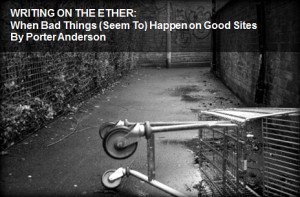 A footnote here. Having mentioned above the “Blog Sommelier,” one of the pairings I’ve suggested this week involves the Ether of August 22, WRITING ON THE ETHER: When Bad Things (Seem To) Happen on Good Sites. Our good colleague Nathan Bransford has posted his own thoughtful piece on what his headline terms The Bullies of Goodreads.
A footnote here. Having mentioned above the “Blog Sommelier,” one of the pairings I’ve suggested this week involves the Ether of August 22, WRITING ON THE ETHER: When Bad Things (Seem To) Happen on Good Sites. Our good colleague Nathan Bransford has posted his own thoughtful piece on what his headline terms The Bullies of Goodreads.

Nathan Bransford
What’s very helpful here, in addition to his careful assessment, is the appeal he makes:
The truth is that it’s hard enough to write and publish a novel without having to worry that…that immense effort will result in getting unfairly slimed and harassed by a pack of online bullies. It’s not hyperbole to say that there are talented authors out there looking at this landscape who will conclude it’s not worth it, and great books that won’t be published as a result of this culture if it continues. This really has gone too far, and the tide needs to turn back. People writing these reviews need to wake up and recognize the humanity of the authors they’re trashing and think of the people they’re hurting. It’s eminently possible to write a negative review without abusing the person who wrote the book.
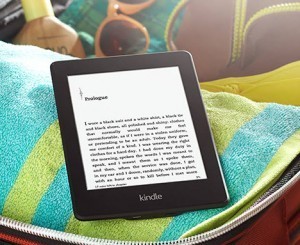 We’ve learned this week that the new Paperwhite Kindles coming from Amazon have a Goodreads integration feature in them. Here is Laura Hazard Owen at GigaOm on it in A new, faster Kindle Paperwhite will start shipping September 30:
We’ve learned this week that the new Paperwhite Kindles coming from Amazon have a Goodreads integration feature in them. Here is Laura Hazard Owen at GigaOm on it in A new, faster Kindle Paperwhite will start shipping September 30:
Book-based social network Goodreads, which Amazon acquired this spring, will be integrated into the device in a post-launch software update, with access to Goodreads from the top navigation bar on the new Paperwhite. The company notes that “We’ve made it easy to take every Amazon purchase you’ve made — print or digital — and add it to Goodreads.” VP of Kindle Content Russ Grandinetti told me the Goodreads integration will arrive sometime this holiday season.
This kind of integration is something I’ve hoped we’d see develop as one result of Seattle’s smart acquisition of the reader-recommendation site. And as such a functionality approaches, the question of a culture of hostility, even in a relatively small part of Goodreads’ huge operation is a serious one.
I have a lot of faith in the best intentions of Goodreads’ and Amazon’s administrations. And I like to remind people that the Goodreads community has 20 million members: we’re talking about moderating something the size of the Australian or Sri Lankan population. Almost two-thirds as many people as live in Canada. Would you like to moderate that?
Bransford’s commentary is, as is usual in his writings, the kind of level-headed, intelligently concerned look we need at this odd development. I commend the piece to you.
#Blog Sommelier: Pair @NathanBransford on “Bullies of @Goodreads” http://t.co/xmpOe4WLTa + the #Ether: http://t.co/YERufKbC1i #WUsocmed — Porter Anderson (@Porter_Anderson) September 4, 2013
Many of us want to see Goodreads succeed and we applaud Amazon’s association with it.
And its only success can be as a welcoming, supportively honest environment of respectful recommendation and discovery.
Still waiting for page turn buttons to make a comeback
http://t.co/2N6kjr5vbt
— Craig Mod (@craigmod) September 3, 2013
Main image: iStockphoto – Oberbaum Bridge, Berlin, by AndreaRoad
The post WRITING ON THE ETHER: Pattern Recognition and Writerly Advice appeared first on Jane Friedman and was written by Porter Anderson.
Jane Friedman
- Jane Friedman's profile
- 1882 followers


